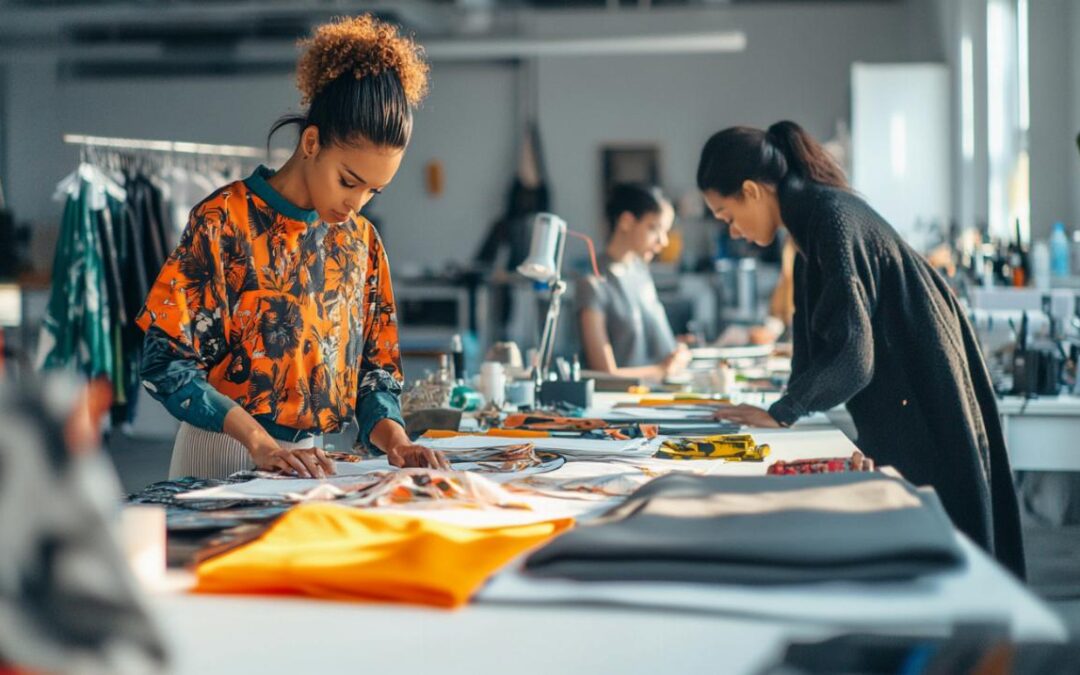The fashion world is undergoing a remarkable transformation as more people recognise the importance of making choices that benefit both their wardrobes and the planet. This shift towards greener practices is reshaping the way we think about clothing, encouraging us to consider not just what we wear, but how our purchases affect the environment and the people who make our garments. As awareness grows, the industry is responding with innovative solutions that marry style with responsibility, proving that looking good and doing good can go hand in hand.
The rise of eco-conscious fashion choices
The movement towards eco-conscious fashion has gained significant momentum in recent years, driven by a growing understanding of the industry’s environmental footprint and a desire to make more responsible decisions. This trend reflects a broader shift in consumer behaviour, with individuals increasingly seeking out brands and products that align with their values. The rise of sustainable living trends in fashion is not merely a passing fad but a fundamental change in how we approach our personal style and consumption habits.
Understanding the Environmental Impact of Fast Fashion
The fashion industry has long been associated with significant environmental challenges, and understanding these issues is the first step towards making more informed choices. The rapid production cycles and disposable nature of fast fashion have contributed to a staggering amount of waste, with a substantial portion of textile materials ending up in landfills or being incinerated rather than being reused or recycled. This cycle of overconsumption and waste has far-reaching consequences for our planet, affecting everything from carbon emissions to the health of our ecosystems.
The industry is responsible for a considerable share of global carbon emissions, highlighting the urgent need for change. The production processes involved in creating garments, from growing raw materials to manufacturing and transportation, all contribute to this environmental burden. Moreover, the sheer volume of clothing produced each year means that even small inefficiencies in the supply chain can have a massive cumulative impact. Addressing these challenges requires a collective effort from both brands and consumers to rethink how we produce, purchase, and dispose of clothing.
Beyond the environmental concerns, the fast fashion model also raises important questions about social impact and the treatment of workers within the supply chain. The push for cheaper and faster production often comes at the expense of fair labour practices and safe working conditions. Only a tiny fraction of workers in the global textile industry earn a living wage, underscoring the need for greater transparency and accountability in how garments are made. By choosing to support brands that prioritise ethical production methods, consumers can help drive positive change throughout the industry.
Embracing ethical manufacturing and fair trade practices
Ethical fashion places a strong emphasis on ensuring that the people who make our clothes are treated with dignity and respect. This means advocating for fair labour practices, safe working environments, and sustainable livelihoods for garment workers around the world. The focus on ethical manufacturing is about more than just meeting minimum standards; it is about creating a fashion industry that values people as much as profit and recognises the vital role that workers play in bringing our favourite styles to life.
Fair trade practices are an essential component of this ethical approach, ensuring that workers receive fair compensation for their labour and that production processes adhere to strict environmental and social standards. Supporting brands that embrace these principles helps to create a more equitable and sustainable fashion ecosystem, where the true cost of clothing is reflected in its price. This shift towards greater accountability is being driven by both regulatory changes and consumer demand, with more people expecting brands to demonstrate their commitment to responsible practices.
In recent years, there has been a notable increase in the number of companies reporting on their environmental and social impact, particularly in regions where regulations are becoming more stringent. This transparency is crucial for building trust with consumers and enabling them to make informed decisions about where to spend their money. As awareness continues to grow, the expectation is that more brands will adopt ethical manufacturing practices and that these principles will become the norm rather than the exception in the fashion industry.
Current trends shaping sustainable style

The landscape of sustainable fashion is constantly evolving, with new trends emerging that reflect changing consumer preferences and technological innovations. From the resurgence of vintage shopping to the development of cutting-edge materials, these trends are helping to redefine what it means to dress sustainably. By staying informed about these developments, individuals can make choices that not only enhance their personal style but also contribute to a healthier planet.
Vintage and second-hand shopping revolution
One of the most exciting trends in sustainable fashion is the growing popularity of vintage and second-hand shopping. This movement represents a shift away from the idea that clothing must always be new and towards a greater appreciation for pre-loved items with character and history. The rise of online platforms and dedicated shops has made it easier than ever to find unique pieces that reflect personal style while reducing demand for new production. Social media has played a significant role in popularising this trend, with discussions around pre-loved fashion experiencing remarkable growth in recent months.
The appeal of vintage fashion extends beyond its environmental benefits, as many people are drawn to the quality and craftsmanship of older garments. There is a growing sentiment, particularly among younger generations, that vintage pieces often surpass contemporary offerings in terms of both style and durability. This appreciation for timeless design is encouraging consumers to view clothing as an investment rather than a disposable commodity, fostering a more sustainable approach to building a wardrobe.
Major fashion retailers have taken notice of this trend and are beginning to incorporate pre-loved offerings into their business models. High street brands are opening dedicated spaces for second-hand items, recognising the demand for more sustainable shopping options. This shift is not only helping to extend the lifecycle of garments but also making sustainable fashion more accessible to a wider audience. As the second-hand market continues to grow, it is likely to play an increasingly important role in reducing textile waste and promoting circular fashion practices.
Innovative sustainable fabrics and materials
The development of innovative materials is another key trend shaping the future of sustainable fashion. Designers and manufacturers are exploring a wide range of alternatives to traditional fabrics, seeking out options that have a lower environmental impact without compromising on quality or aesthetics. From fibres derived from unexpected sources to advanced recycling technologies, these innovations are opening up new possibilities for creating clothing that is both stylish and eco-friendly.
One particularly intriguing development is the use of unconventional materials such as seaweed fibre in garment production. Brands are experimenting with these novel fabrics to create products that are not only sustainable but also offer unique properties and textures. This kind of innovation demonstrates the potential for the fashion industry to move beyond conventional materials and embrace a more creative and environmentally conscious approach to design. As these technologies mature, they are likely to become more widely available and affordable, making sustainable options accessible to a broader range of consumers.
Recycling technologies are also advancing rapidly, with new methods being developed to give old textiles a second life. Closed-loop systems, which aim to recycle materials back into new garments, have the potential to significantly reduce the industry’s carbon footprint. By keeping materials in use for longer and minimising waste, these systems represent a crucial step towards a truly circular fashion economy. The adoption of such technologies requires investment and collaboration across the supply chain, but the environmental benefits make it a worthwhile pursuit for brands committed to sustainability.
Ultimately, the combination of consumer demand, regulatory pressure, and technological innovation is driving the fashion industry towards a more sustainable future. While challenges remain, particularly in terms of bridging the gap between consumer intentions and actual behaviour, the momentum behind sustainable living trends in fashion is undeniable. By making conscious choices about what we wear and supporting brands that prioritise ethical and environmental responsibility, we can all play a part in creating a fashion industry that is kinder to both people and the planet.












